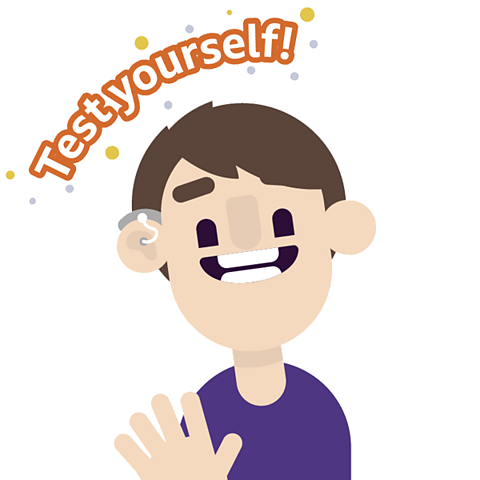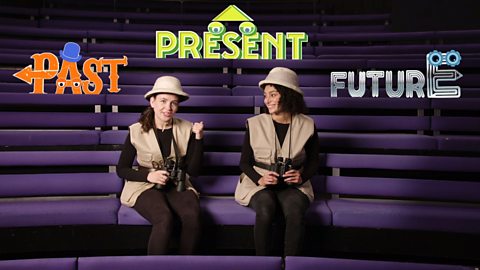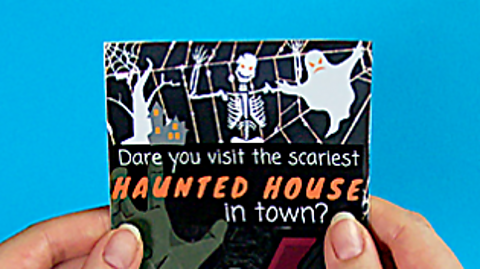Did you know?
‘The’ is the most commonly used word in English.
‘The quick brown fox jumps over the lazy dog’ uses all 26 letters of the English alphabet and is called a pangram.
Most average adult English speakers know between 20,000–35,000 words.
Hundreds of new words are added to the English language every year.
A word, phrase or sentence that is the same both backwards and forwards is called a palindrome.
Introduction to grammar
Grammar is the system for organising a language. Grammar allows us to structure our sentences and even our thoughts and ideas.
Word level grammar covers verbs and tenses, nouns, adjectives, adverbs and other parts of speech.
Sentence level grammar covers the order of words in a sentence, phrases, clauses and types of sentences.
Video about grammar and why it is important
Find out how languages around the rule use grammar
What is grammar?
We often think of grammar as a list of rules we learn at school, but it is far more exciting than that. Grammar helps you to understand how language works. It helps you to express your ideas both clearly and creatively.
Grammar is one of the first things we pick up as we learn to speak and use language. As we listen to others talk, we hear the patterns and structures of the words and start to use this grammar ourselves.
Grammar 'rules' can change over time, just as our language can change over time. Grammar is more about helping us to understand each other rather than just being a set of fixed rules.
Every time you write or speak, you are using grammar. To make brilliant grammatical choices you have to understand the effect and purpose of grammar. The fun of grammar is that there are so many choices to make; your challenge is to make the best choices!
Parts of speech
Words create sentences and different words do different jobs in a sentence. Some of the main parts of speech include: noun, pronoun, verb, adverb and adjective.
Noun and pronoun
Nouns are words that are used to name people, things, animals, places, ideas, or events. A pronoun can be used instead of a noun. Some examples of pronouns are: I, it, he, she, mine, his, hers, we, they, theirs, our, someone, anyone, and everyone.
For example:
Mo is a very intelligent child. He completed all the questions and shared the correct answers with the class when the teacher asked him to.
Mo is a noun. He/him are pronouns used instead of his name.
Find out more about nouns.
Verbs
A verb is a word that shows an action (physical or mental) or state of being. Without a verb, it would be difficult to create a sentence. Verbs can also show when things happened.
Example sentence: As usual, Mr. Moore’s team won the debate. They were happy.
In the first sentence, the word ‘won’ shows the action: what the team did. In the second sentence the verb ‘were’ tells us their state of being – in this case being happy.
Find out more about verbs.
Adjectives and adverbs
Adjectives and adverbs work as modifiers. In other words they alter, change or add detail to other words in a sentence.
An adjective adds information to a noun or pronoun.
An adverb mainly adds information to the verb. Sometimes it adds information to an adjective or another adverb.
To be able to identify whether it is an adjective or an adverb, you need to work out the word that is being modified.
For example:
- Lions are powerful predators. ('Powerful' is an adjective, modifying the noun 'predators'.)
- Lions move powerfully. ('Powerfully' is an adverb, modifying the verb 'move'.)
Find out more about adjectives.
Sentence structure

Let's take the following words: cat the mat on sat the. We all know what the words mean but put together like that they don't make much sense. Cat is the subjectThe subject (in a sentence) is the actor of the sentence, the person or thing doing the action. here, mat is the objectThe object (in a sentence) is the element of the sentence that is acted on, that the verb is directed towards. , and sat is the verbA verb is a word that shows an action (physical or mental) or state of being. .
The English language has a subject, verb, object (SVO) grammatical structure. If we rearrange the words into this structure we come to: the cat sat on the mat.
This subject, verb, object (SVO) structure is the usual grammatical system for English and other languages like Mandarin, Spanish and Russian. However, a subject, object, verb (SOV) structure is also very common and Japanese, Hindi and Korean are some of the languages that use this structure.
Without these structures we would be unable to talk about complex ideas and thoughts or even discuss basic things like what we’re having for dinner next week.

Put the sentences in order
Put the sentences in the order that makes the most sense:
cake eat the children
blew the whistle the teacher
ate my lunch I
Answers:
The children (S) eat (V) cake (O).
The teacher (S) blew (V) the whistle (O).
I (S) ate (V) my lunch (O).

Sentence types
If we think about sentences as having jobs to do, there are four main types of sentences: questions, commands, exclamations, statements.
A statement states a fact, idea or opinion and finishes with a full stop.
For example:
- Summer is my favourite time of year.
- When it’s sunny, I put on sun cream.
A question uses a question mark at the end of the sentence to show that something is being asked. Often a question changes the usual order of the words at the beginning of a sentence.
For example:
- Did you walk the dog?
- Would you like a drink?
A command uses a verb to give instructions. It can use either a full stop or an exclamation mark, if it is urgent.
For example:
- Please do not walk on the grass.
- Stop!
An exclamation always uses an exclamation mark at the end of the sentence to express a strong emotion.
For example:
- Wow, that’s amazing!
- You’re such a liar!
In an essay or report, you are most likely to use statements and questions and least likely to use commands and exclamations.
Test your knowledge
Secondary games. gameSecondary games
Have fun playing science, maths, history, geography and language games

More on Grammar
Find out more by working through a topic
- count2 of 12

- count3 of 12

- count4 of 12

- count5 of 12
